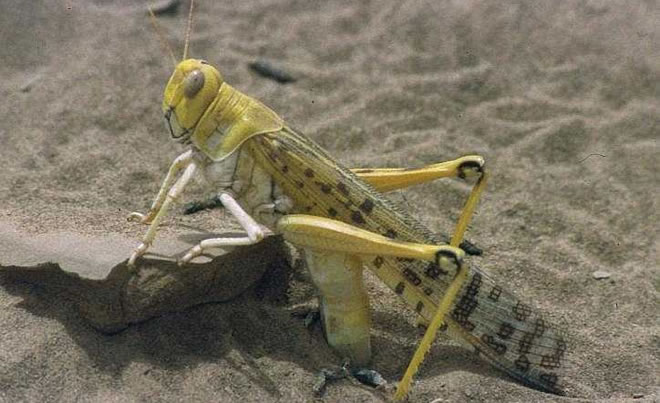
Saturday October 12, 2019

Desert Locust has threatened eastern part of Ethiopia and destroyed grass and shrubs in country’s Somali and Afar regional states, the Ethiopian Ministry of Agriculture has disclosed
Plants Conservation Director with the Ministry Zebdios Flato told journalists on Friday that the desert locusts have destroyed grass and shrubs on eight districts of Afar and three districts of Somali regional states since its appearance in July this year.
The desert locust has caused no serious damages on crops but ravaged grasses and shrubs in east Amhara, South eastern of Tigray and eastern Oromia and Dire Dawa administration.
The relatively smaller size and scattered population in Afar and Somali regions has made the controlling operation difficult. The Oromia, Harare Dire Dawa administrations have teamed up in control the spread of the locust.
"Since the desert locust is breeding in various parts of Amhara, Tigray and Afar regional states, the three regions should join efforts to combat the existing high probability of the Desert Locust spreading in all parts of the region,” Zebdios added.
Security problem, mainly in Afar region, is said to have made the control operation challenging.
According to the Ethiopian Metrological Agency and the prolongation of the rainy season will create favorable environment for the desert locust to breed and spread to other parts of the country.
The director called on regional governments to allocate the necessary budget, deploy experts and raise awareness of the public to halt the spread of the locust before it become adult
Zebdios said the Desert Locust, which migrated from Somalia and Yemen, has been spotted across different parts of the East African country, mainly in parts of Ethiopia's five major regional states.
The ministry, which recently received Desert Locust summer breeding caution from the UN Food and Agriculture Organization (FAO), has been collecting data from the ground on the status of Desert Locust in parts of the country.